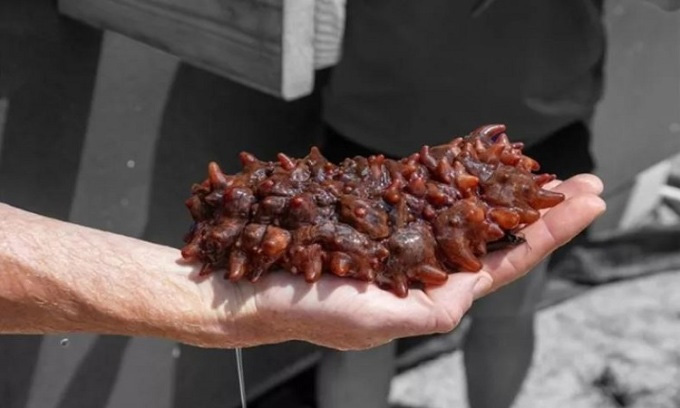Three Native Sea Cucumber Species to be Cultivated in Ancient Fishponds on a Dormant Volcano in Hawaii.
Kauaʻi Sea Farm, the Pacific Islands Fisheries Group, and the National Oceanic and Atmospheric Administration (NOAA) are working on breeding three species of sea cucumbers with hopes they will become a high-value export, while also providing numerous benefits to the local ecosystem, Newsweek reported on September 28. The project is taking place at the Nomilo Fishpond on the southwestern coast of Kauai, Hawaii. This fishpond is located in a dormant volcanic crater and is one of the oldest and most fertile water bodies in the state.

Namako sea cucumber is a native species in Hawaii. (Photo: NOAA)
Hawaii has 488 fishponds like Nomilo, an ancient aquaculture system developed to support sustainable fish farming for hundreds, if not thousands, of years. However, following the Westernization trend in Hawaii in the early 20th century, many fishponds fell into disrepair. The Nomilo Fishpond has been abandoned since 1992, after Hurricane Iniki blocked the seawater channels and disrupted the nutrient flow between the pond and the ocean. Fortunately, due to recent restoration efforts, Nomilo now contains a healthy population of native species.
“We hope this project can help address some of the challenges that fishponds face, including water quality, food sources, funding for restoration and management,” said Tori Spence, an aquaculture specialist at NOAA.
Sea cucumbers are a group of marine animals found worldwide. They are small, elongated, tubular-bodied creatures that can grow nearly two meters long. They are considered a delicacy, especially in East Asia and Southeast Asia. According to Kaua’i Sea Farm, sea cucumbers are important for coastal ecosystems but are overfished globally due to the high-value export market.
Breeding sea cucumbers offers many benefits beyond export. Sea cucumbers act as underwater clean-up crews, consuming organic waste and sediment that settles at the bottom of the pond. Similar to oysters and clams that filter water, sea cucumbers can improve pond water quality, helping to increase the number of fish that thrive in the pond, according to David Anderson, production manager at Kaua’i Sea. The project focuses on cultivating three native sea cucumber species in Hawaii: surf redfish, white teatfish, and namako.
The initial phase involves raising juvenile individuals in solar-powered nurseries. Next, project members will conduct experiments in different pond environments to explore how they grow. In the final phase, Anderson and his team will collaborate with the Hawaii Sea Grant network to develop sustainable farming practices for various other Hawaiian sea cucumber species.


















































